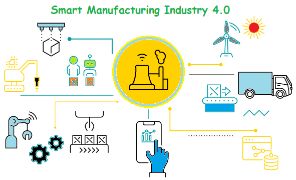Introduction
The advent of Industry 4.0 has brought forth a new era of manufacturing, with the emergence of smart factories at the forefront. These intelligent production facilities integrate cutting-edge technologies, such as the Internet of Things (IoT), artificial intelligence (AI), machine learning, and robotics, to optimize efficiency, productivity, and quality in manufacturing processes. Smart Factory Industry 4.0 represents a significant leap forward, enabling interconnected systems, real-time data exchange, and intelligent decision-making, ultimately transforming the traditional manufacturing landscape.
Evolution of Manufacturing
In order to understand the significance of Smart Factory Industry 4.0, it is important to recognize the evolution of manufacturing processes. The first industrial revolution, driven by mechanization, laid the foundation for mass production. The second revolution introduced assembly lines and electricity, increasing production efficiency. The third revolution, marked by automation and the use of computers, brought about significant advancements. Now, with Industry 4.0, we are witnessing the convergence of digital technologies and physical systems, resulting in the emergence of smart factories.
Key Features of Smart Factories

Smart factories are characterized by the integration of various technologies and systems that enhance operational efficiency and streamline production processes. These include:
2.1 Internet of Things (IoT)
The IoT plays a pivotal role in smart factories by connecting devices, machines, and systems to enable seamless communication and data exchange. This interconnectedness allows for real-time monitoring, remote control, predictive maintenance, and intelligent decision-making.
2.2 Artificial Intelligence (AI) and Machine Learning
AI and machine learning algorithms empower smart factories to analyze vast amounts of data, uncover patterns, and make data-driven decisions. This leads to optimized production planning, improved quality control, and predictive maintenance, reducing downtime and costs.
2.3 Robotics and Automation
Robotic systems automate repetitive tasks, increasing production speed and precision while reducing errors. Collaborative robots, or cobots, work alongside human operators, enhancing productivity and safety on the factory floor.
2.4 Additive Manufacturing
Additive manufacturing, commonly known as 3D printing, enables the production of complex parts and prototypes with reduced material waste and shorter lead times. It allows for greater design flexibility and customization in manufacturing processes.
Conclusion
In conclusion, Smart Factory Industry 4.0 is revolutionizing the manufacturing landscape by harnessing advanced technologies to optimize efficiency, productivity, and quality. The integration of IoT, AI, and robotics in smart factories offers a range of benefits, including enhanced efficiency, improved quality control, agile production capabilities, cost reduction, and increased workplace safety. However, there are challenges to overcome, such as data security, workforce adaptation, and the initial cost of implementation.

